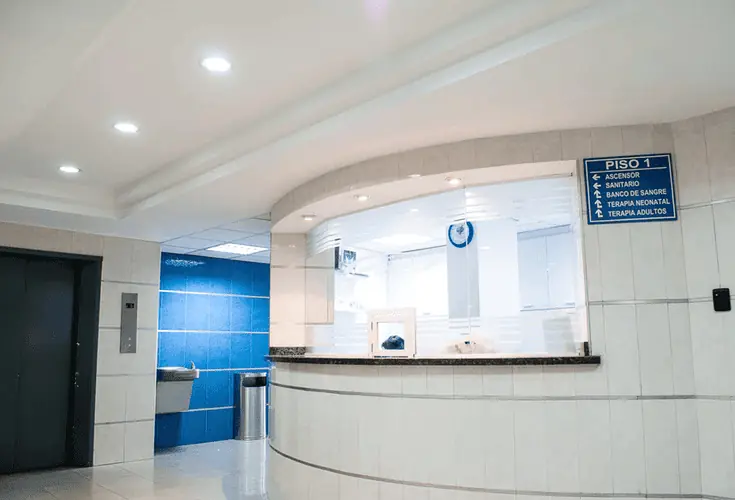The United States healthcare system is incredibly inefficient when it comes to administrative costs.
Statistics show that administrative expenses in the United States account for 8% of total health care costs, well above the global average of 2%.
If the health care system addressed this inefficiency, it could save more than $175 billion per year.
Fortunately, a role is growing in popularity that would streamline administrative health care costs: medical scribes.
Medical scribes are individuals who assist doctors and other health care professionals by completing administrative and clinical tasks.
If you’re interested in a medical scribe job, this article contains all the necessary information on becoming a new scribe.
What Does a Medical Scribe Do?
A medical scribe manages data entry and recording in a medical office.
Scribes tend to trail behind doctors and other healthcare professionals, logging information into a patient’s electronic medical record (EMR).
A medical scribe is essentially someone who specializes in medical-specific data entry, and acts as an assistant to a doctor, nurse practitioner, or physician’s assistant.
Before the introduction of medical scribes, doctors were responsible for updating a patient’s EMRs.
This proved problematic for two reasons.
One, there is a significant learning curve when introducing new technology.
Doctors know how to treat patients, but struggle with learning how to implement new technology.
Secondly, updating these electronic health records (EHR) proved to be too time consuming, and doctors are pressed for time.
Medical scribes allow doctors to have higher-quality patient encounters because doctors can focus entirely on treating the patient.
Studies have found that medical scribes improve productivity and cost for physicians.
One specific study from 2012 concluded that scribes allowed doctors to see more patients while improving clinical documentation.
How Much Are Medical Scribes Paid?
According to ZipRecruiter, medical scribes make an average of $13 per hour, although the pay ranges from $11 to $15.
The pay rate can fluctuate depending on several factors, including your previous medical experience, certifications from scribe programs, and any additional skills that you can offer.
Additionally, your pay can depend on where you live.
For instance, ZipRecruiter says the average annual salary for a medical scribe in New York is about $32,400 per year, the highest of the 50 states.
The pay is lowest in North Carolina where the average annual salary is approximately $23,200.
What Experience Do You Need to Become a Scribe?

Although a familiarity with medical terminology is preferred, you need only minimal experience to become a medical scribe.
At the very least, you need a high school diploma.
Some scribing companies also prefer to work with college students or those who have obtained a degree from a two- or four-year institution.
You don’t necessarily need a medical education to work for a healthcare provider as a scribe, but it can help.
You will need exceptional computer and typing skills.
The medical industry is fast-paced, and you’ll need to enter records quickly and accurately if you’re going to be successful as a medical scribe.
You will also need exceptional communication skills and an ability to connect with patients.
You’ll need to know how to record the results of a physical exam, including blood pressure and heart rate readings.
Medical scribes will never have to touch patients, interpret results, provide medical advice, or handle bodily fluids.
Lastly, you’ll need to complete a training program and receive certifications to work as a medical scribe.
Certifications can depend on the work that you’re going to do.
However, the minimum certification that you’ll need is one from the American College of Medical Scribe Specialists.
From there, you’ll receive your Computerized Provider Order Entry Certification, which allows you to work with EMRs.
Who Should Consider Becoming a Scribe?
If you’re someone with medical experience looking for a full-time job in a budding industry, you’ll want to consider becoming a scribe.
Furthermore, if you’re interested in a part-time position that provides you with somewhat flexible working hours, you’ll also want to consider this role.
This role is also ideal for those interested in entering the medical field.
Working as a medical scribe can provide excellent pre-med experience before applying to medical school.
Many medical schools suggest that applicants have scribe experience before applying.
Scribing can help you confirm that a career in medicine is something you want to do in the future.
If you’re a medical student in need of physician assistant clinical training hours, you can work as a scribe to fulfill the requirement.
You can offer scribe services in a variety of different specialties, ranging from emergency medicine to orthopedics.
Doing so helps students familiarize themselves with the practice of medicine in a real-world setting.
Anyone can work as a medical scribe with proper training.
However, the role is best suited for those with previous medical experience or are interested in further developing their skills for a future career in medicine.
Training Programs on How to Become a Medical Scribe
If you’d like to become a medical scribe, many scribing services will provide you with the training you need to be successful.
Take ScribeAmerica, for instance. ScribeAmerica is the largest scribing company in the United States and has recently expanded into Australia and Canada.
ScribeAmerica works with both large health systems and small providers.
ScribeAmerica has a TeleScribes Program that trains potential scribes and places them in open positions.
While we’ve listed an overview of the TeleScribes Program, the following information tends to be fairly consistent for reputable companies with scribe programs.
TeleScribes says that the training program takes about 120 hours to complete.
You’ll begin with an orientation, which takes roughly 1-3 weeks.
During this phase, your training will include:
- Medical terminology
- Audio exercises
- System-based videos
- HIPAA/PHI compliance
- Case presentations
- Professional appearance
After completing the orientation phase, candidates will move to the supervisory period.
Prospective scribes will work for at least six days with an in-person mentor who will supervise their work and provide them with feedback.
This stage includes:
- One-on-one personal clinic training
- Guidance on how to track patients records efficiently
- Chart reviews and corrective feedback
- A final assessment in a clinical setting
After completing the training program, you’ll have the certifications necessary to begin working.
ScribeAmerica says that it compensates candidates for the training program.
The company also has a periodic reassessment phase, during which scribes will go through continuing education and monthly satisfaction reviews.
Unless you have received certifications on your own, you’ll need to go through a training program before you can begin working as a medical scribe.
Search for employers who provide and pay for training.
While ScribeAmerica is the largest such employer, there are others out there.
Can Medical Scribes Work Remotely?

More and more scribe companies have begun offering remote positions.
For instance, iScribes is currently hiring for Virtual Medical Scribe positions.
The company offers flexible work hours on the days that you’re assigned to work, providing ample work-life balance. iScribes will also pay for your medical scribe training.
Though medical scribing typically occurs in person, scribe positions are generally available in both part-time and full-time roles, so you should have no problem finding flexible work that fits your schedule.
Matthew Glowsinky, a strategy and operational planning associate at ScribeAmerica, recently outlined on an Accepted.com Admissions Straight Talk podcast how shifts can vary depending on location.
He said that shifts in surgical specialties might last four hours, while shifts in an emergency department could last 12 hours.
Looking for Remote Jobs in the Medical Field?
If you have a medical background and want to work from the comfort of your own home, there are numerous opportunities for you to do so.
In addition to learning how to become a medical scribe, you could also consider learning medical coding and medical transcription.
Medical coders are critical because they allow health care officers to receive reimbursement from insurance carriers.
Transcription jobs involve converting voice notes into text format to add to medical records.
Both roles play an integral part in the patient care process.
Be sure to also check out our guide on how to land a part-time, work-from-home job to learn more.










